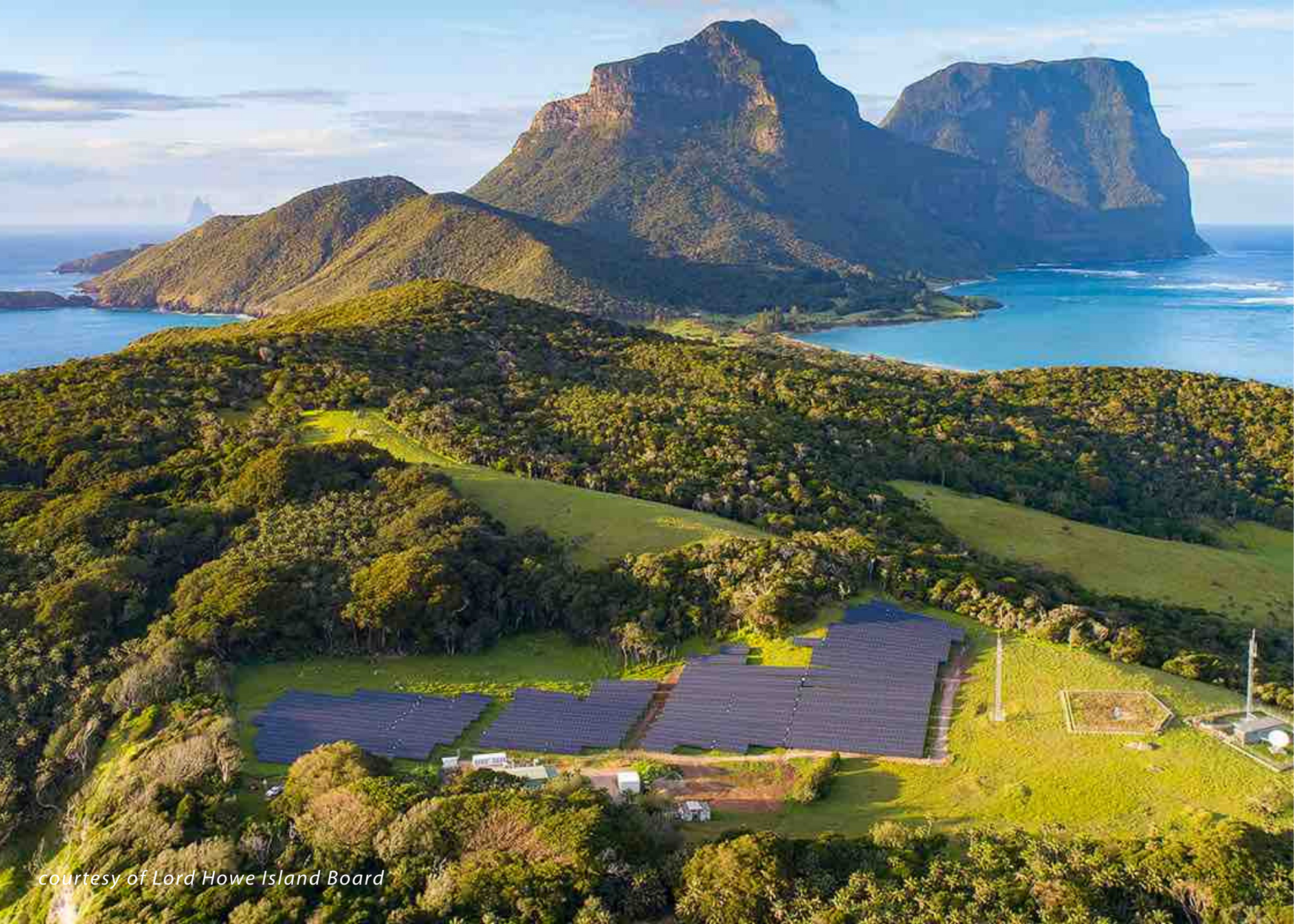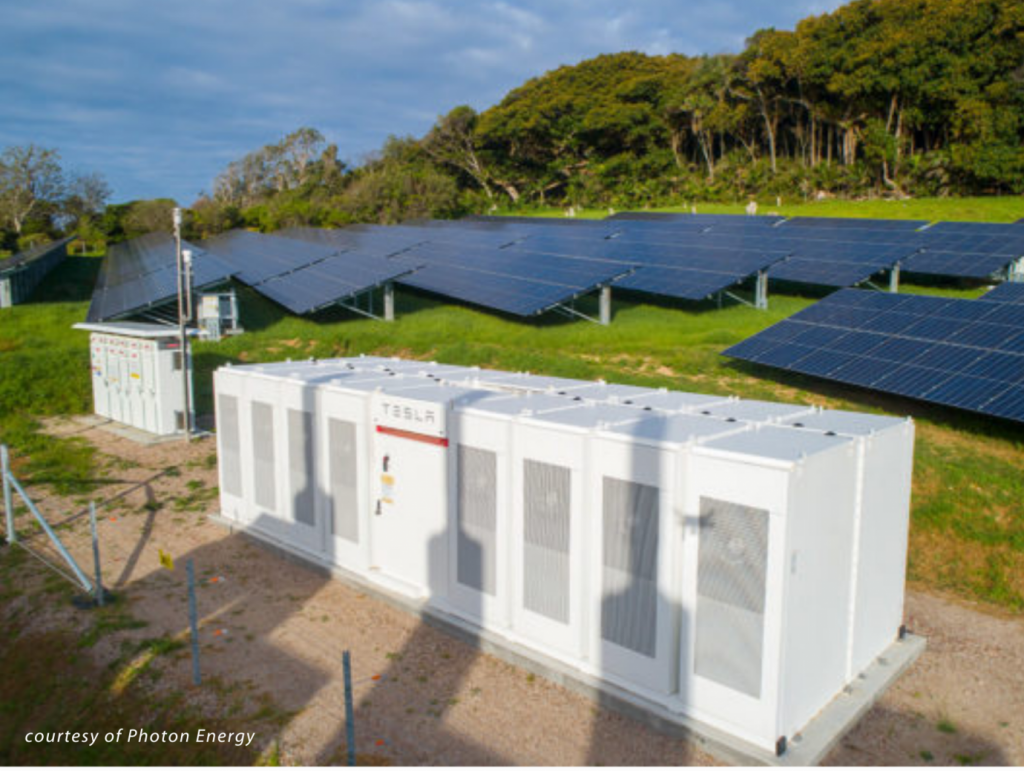
Client: Photon Energy Group
Project Goals:
- The ARENA funded hybrid battery and solar system aims to reduce the local community’s reliance on diesel generated electricity by over 67%. Resulting in:
-
- Significant fuel cost savings,
- Decreased greenhouse gas emissions and
- Reduced likelihood of spills at the World Heritage site.
CTP Scope:
- At the heart of any hybrid power system is the control system to ensure stable and seamless supply of power as it dispatches multiple sources – in this case between storage, solar and diesel.
- This is highly complex and is founded on detailed power system modelling which was the basis of CTP’s scope.
- CTP was engaged to undertake all power system studies and power quality studies to demonstrate the steady state and dynamic impact of the new renewable energy generation (solar and storage) and existing diesel generation on the HV network.
- Review protection design, conduct the protection study and make significant contributions to protection design.
- Assess compliance of the earthing system with the addition of the microgrid.
Timeframe:
- Power System Modelling Phase: Dec 19 – Apr 20
- Construction Phase: Q1 – Q3 20
- System Commissioning: Q3 20
Project Challenges:
- Critical information was missing for the existing diesel generators operation. This, prevented CTP from simply integrating the existing generation with the new generation to form a new hybrid DigSILENT PowerFactory model. CTP resolved this issue through an iterative process to close the information gaps.
- A vendor supplied DigSILENT PowerFactory model contained fundamental issues preventing certain studies to be performed, requiring the team to develop an alternative intermediary solution. This allowed CTP’s customer to provide temporary results to further the project whilst waiting for a vendor solution.
- Design an effective protection network for a system with low fault current contributions and ensure protection coordination with existing protection system for different supply configurations.
Project Results:
- The modelling was able to successfully demonstrate the hybrid power station could meet the stringent requirements set out in the national electricity rules, despite this site being a remote microgrid with a high penetration of variable solar PV generation.


